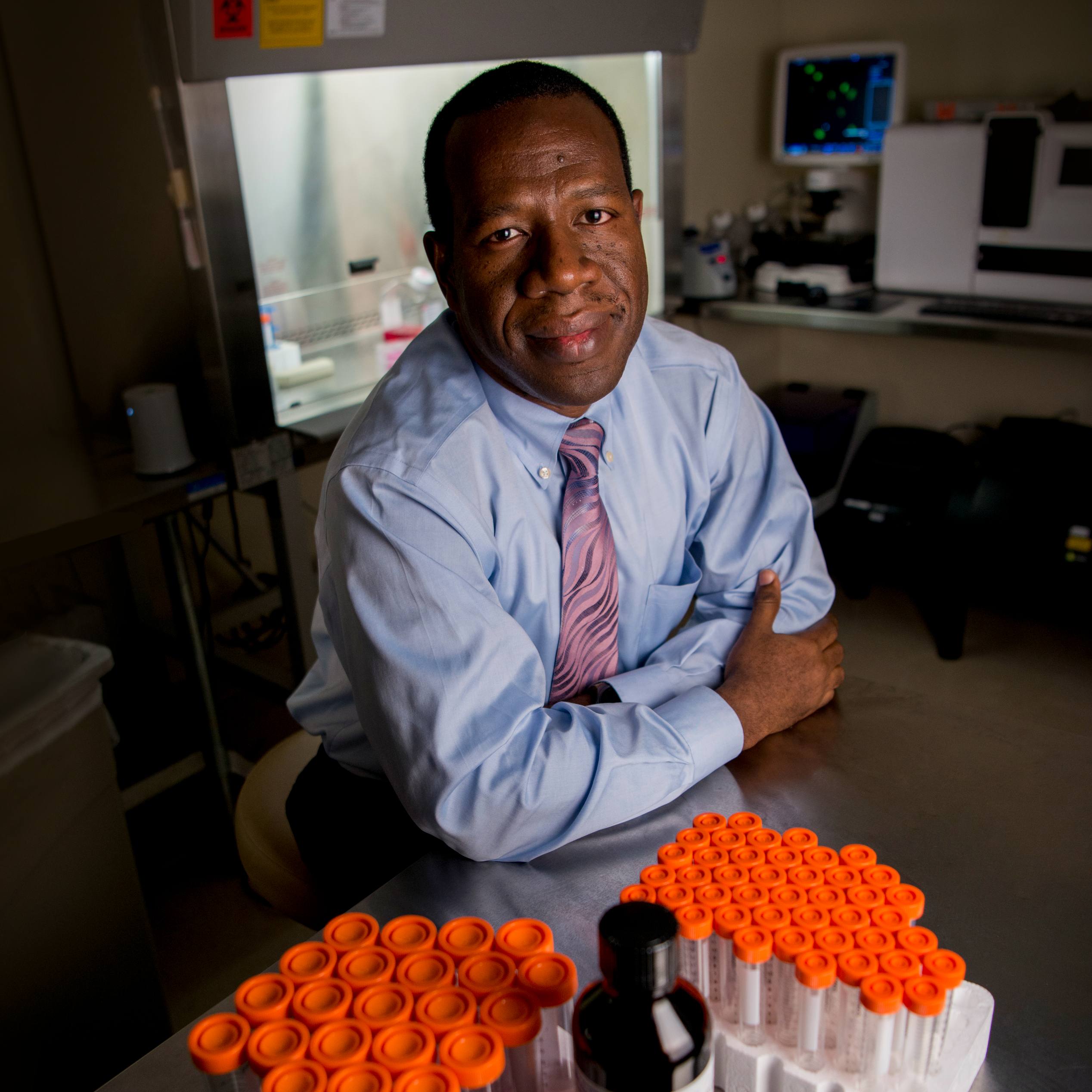-
Mayo researchers reveal gene therapy path for treating children with rare, fatal genetic disease

A gene therapy strategy developed by Mayo Clinic researchers could offer a potential treatment for a rare and fatal genetic disease that often sickens babies in their first days of life. The disease, propionic acidemia, occurs in 1 in 100,000 live births in the U.S. There is no cure.
"As soon as the babies start eating, they quickly get sick," says Michael Barry, Ph.D., a gene therapy expert within Mayo Clinic's Division of Infectious Diseases. "They can start vomiting, become lethargic and have seizures. They have metabolic acidosis (electrolyte disorder) and particularly hyperammonemia (excess of ammonia in the blood), which is very dangerous. And if they are not treated, they can die."
Dr. Barry and his team with Mayo Clinic's Center for Individualized Medicine have developed a technique to replace the defective genes that cause the disease. Dr. Barry will present his gene therapy strategy at the upcoming Undiagnosed Disease Network International and Mayo Clinic Science Session April 9–11.
Propionic acidemia is caused by an inherited mutation in the PCCA or PCCB genes, which provide instructions for making the enzyme propionyl-CoA carboxylase. This critical enzyme, which is used by many cells in the body, plays a role in breaking down amino acids, as well as certain lipids, or fats, and cholesterol. A deficiency in this enzyme leads to a buildup of toxic chemicals.
In most cases, patients are given a special protein-restricted diet that can limit life-threatening episodes, but this is difficult and does not cure the disease. Current treatment options are limited and do not provide the quality of life or long-lasting benefits that patients and their families are seeking. In some cases, a liver transplant is a potential treatment, but this has its own risks.
"Our approach is to give these patients a good copy of the gene to counteract the disease as best we can," explains Dr. Barry, who has devoted 15 years to studying propionic acidemia. "This restores the ability of cells in the body to process these food components and reduce the production of toxic chemicals."
Special delivery packaged in an unusual source

Following years of genetic research, the Mayo team is studying gene therapy as a technique to treat diseases caused by defective genes. Genes contain DNA — the code that controls the body's form and function. Gene therapy replaces the faulty genes or adds a new gene in an attempt to treat a disease, thereby avoiding surgery or long-term medication use for treatment.
The key to Dr. Barry's gene therapy approach is an adeno-associated virus (AAV), which is known for infecting people without causing disease. These viruses are experts at penetrating cell walls and shuttling the PCCArepair gene to the cell's nucleus, where it is expressed to provide the missing functions.
"AAV is very good at taking its own DNA and putting it into a cell, so we're basically removing almost all of the viral genes and then replacing them with the repair gene to try to treat the disease," explains Dr. Barry.
Overall, the virus plays the essential role of targeting the correct cells and safely delivering the therapeutic genetic material into them.
The expectation is that the corrected genes will be expressed within the patient's cells, and the affected cells will begin producing the correct protein to fight off the disease. This kind of gene therapy can be given to a patient once, and it is hoped to give years of long-lasting benefit.
Combating disease through gene therapy
The researchers demonstrated that this type of gene therapy can protect animals with propionic acidemia and allow them to eat a protein-rich food and develop normally. Based on this, the team hopes to begin a human clinical trial at Mayo Clinic within the next year or two.
"Our approach is to give these patients a good copy of the gene to counteract the disease as best we can. This restores the ability of cells in the body to process these food components and reduce the production of toxic chemicals." - Dr. Barry
Helping to facilitate the approach and move the gene therapy project forward to the clinic is David Deyle, M.D., a Mayo Clinic clinical genomicist.
"There is still work to be done in order to do all of the testing needed to bring this promising treatment to patients, but we are encouraged by results and have begun the process toward a clinical trial," Dr. Deyle says.
Dr. Deyle says the gene therapy technique holds the potential for treating a wide range of genetic disorders, such as cancer, vision loss, inborn errors of metabolism, blood disorders, immune disorders and neuromuscular disorders.
Mayo Clinic's gene therapy for propionic acidemia has been granted Food and Drug Administration (FDA) Orphan Drug and Rare Pediatric Disease designations. These designations are intended to stimulate development of treatments for rare diseases that affect children by giving drug makers accelerated FDA review.
Testing for propionic acidemia is already a part of standard newborn screening. If the gene therapy strategy is proven to be safe and effective in humans, it could potentially provide the ability to treat patients early, enabling an improved quality of life.
Learn more
Read more stories about advances in individualized medicine.
Register to get weekly updates from the Mayo Clinic Center for Individualized Medicine blog.
Join the conversation
For more information on the Mayo Clinic Center for Individualized Medicine, visit Facebook, LinkedIn or Twitter at @MayoClinicCIM.








